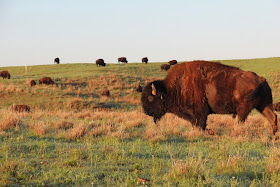 |
| The famous Leopold Shack near Baraboo, Wisconsin. |
A thing is right only when it tends to preserve the integrity, stability, and beauty of the community, and the community includes the soil, waters, fauna, and flora, as well as people. -- Aldo Leopold
--------------------------------------------------------
Ah yes, one of my favorite Leopold quotes. The man who initiated the modern age of wildlife management and promoted the ever-so-appropriate land ethic spent many years restoring his piece of sand property on a bend of the Wisconsin River near Baraboo. His hallmark work was "A Sand County Almanac." It gives the most poetic blueprint for living in harmony with nature instead of trying to always simply dominating it.
***********
Today is Arbor Day. It's so appropriate to give homage to Leopold and his writings, philosophy and personal endeavors to conserve nature. Much of his personal efforts involved restoring pine trees to a very abused landscape. He also planted oaks. One of these oaks was a Black Oak planted in front of the famous "shack" which was a chicken coup when Aldo first purchased the land.

You can have a direct connection to Aldo Leopold and his legacy through my offering of a Black Oak seedling which I grew from acorns from the tree shown below. If you simply tell me you'd like one and are willing to donate whatever you feel you can afford to either The Nature Conservancy in Kansas or the Leopold Foundation, I'll make arrangements somehow to get a seedling to you. I'll include information about growing conditions and preferences for this species as well as some more information about the "shack" and Aldo Leopold. See links below for both TNC in Kansas and the Leopold Foundation. Just leave me a comment below and a way to contact you and we'll get you a Leopold Oak.
 |
| THE Black Oak in front of the "shack" from which this seedling originated. |
http://www.aldoleopold.org/home.shtml
http://www.nature.org/
























